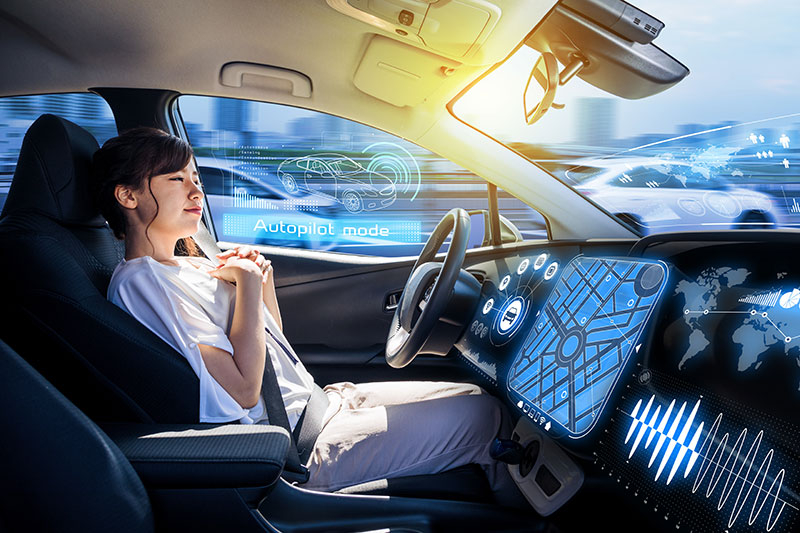Artificial intelligence is everywhere and it’s becoming more prominent as each year goes by. There are many examples of how AI is used in technology today. Streaming service Netflix is one of the biggest in the world and a great example of how we have been a victim of AI without even knowing! Netflix uses AI to bring highly predictive suggestions for you. Based on everything you watch, user recommendations, your ratings and a number of other factors, Netflix comes up with viewing suggestions that are perfect for you. Siri is also a great example of AI that we use every day. Many people will be familiar with Apple’s personal assistant who gives us information, sends messages, makes calls, answers our questions, gives us directions and much more. Using artificial intelligence, Siri is able to continuously learn about you through your interactions and make more intelligent predictions about what you will ask. With AI shaping the future of digital technology, Refused Car Finance look at the ways in which it is impacting the automotive industry and how AI will be integrated into our everyday lives.
Driverless cars
One of the biggest and most upcoming pieces of artificial intelligence is the introduction of driverless cars. It can be argued that driverless cars have been around for about a decade now and aren’t particularly new but for a lot of us, driverless cars are still a million miles away. Autonomous vehicles use artificial intelligence to replicate a human driving a car without the actual need for a human to be in control. Years and years’ worth of studying the human form has enabled us to replicate vehicles that have sensory functions, cognitive functions and other capabilities of that of a human. AI is used in many different ways already within the automotive industry. The AI systems used within vehicles are progressively training and learning to be prepared for any situation that may arise while on the road.
One of the biggest ways in which AI helps autonomous cars is the ability to connect with other cars and vehicles on the road. This is known as car-to-car (c2c) communication or vehicle to vehicle (v2v), which helps cars send messages to each other and share data. As drivers, we know how unpredictable the road can be but can autonomous vehicles that are able to share their status, direction, speed, route, lane change etc with each other prevent that unpredictability? Driverless cars are also said to be able to understand other aspects of the road such as traffic lights, road signs, school zones and more.

Driver assistance
This is a piece of technology that has been successfully used for a few years and is a solid example of AI in the automotive industry. Whilst we’re not fully ready for autonomous driving to take over, driver assistance is basically a soft introduction to driverless vehicles. Driver assistance is already being used by many brands such as Honda, Nissan, Ford, Toyota, Audi and more! This piece of technology does what it says on the tine, it assists the driver with functions that they would usually have to perform themselves. It can range from simple systems that are found on many cars, to much more complex systems. By using dozens of sensors and reactive lasers, AI can alert the driver and take over control of the vehicle through features such as steering and lane control assist, collision warning, drowsiness detection, adaptive cruise control, automatic braking and much more.
Responsive maintenance
AI can be present at any part of the life cycle of a vehicle, which includes manufacturing. Each car that uses AI will provide data that can be used when creating the next generation of cars. Responsive maintenance should be implemented at the manufacturing stage to prevent vehicle recalls and unexpected breakdowns or accidents. Responsive maintenance allows the vehicle to send more in-depth information to the driver and access thousands of data points within the car to spot even the most minute changes that could indicate a bigger problem.
Motoring insurance
The insurance industry spends a lot of time predicting what will happen in the future and calculating risk. AI can speed up the process of filing a claim and can make predictions about the driver rather than relying on their driving history to compile an insurance quote. AI can also be used to tell how good of a driver you are and how safely you drive, which can lower your car insurance premium. Thanks to safety features such as driver assistance, there should be a reduced number of accidents on the road and hopefully prevent you from making a claim on your insurance.

Car finance
The car finance industry is booming, and more people than ever are choosing to get their next car on some sort of finance. Ai is already being used in the auto finance industry with technology such as repayment risk systems and risk assessments. Based on your credit score and personal details, car finance lenders will determine whether or not they should lend to you and be able to make your repayments time. Getting car finance with bad credit can be difficult as you may have had trouble in the past repaying finance or debts. The introduction of AI enables lenders to get better insights into their applications and gives them a more in-depth approach to the likelihood of the loan being paid back on time and in full.




















































Leave A Comment
You must be logged in to post a comment.